THE BIG TEN: Tech & Learning's List of the Most Influential People in EdTech for 2015

No longer does the phrase “education technology” just mean speeds, feeds, and literacy rates. In 2015, it means politics and privacy, charters and startups, assessments and digital divides. These are the people who will affect the nation’s classrooms, whether you like it or not.
ROCKY KILLION
West Lafayette Community School Corporation
The phrase “This is only a test” is not in Superintendent Dr. Rocky Killion’s vocabulary. The West Lafayette Community School Corporation superintendent has been quite vocal about his displeasure with standardized testing—not only for his home state of Indiana, but for the entire country. He even took to the big screen in the documentary film Rise Above the Mark, in which he proselytizes about the dangers of raising test takers, not thinkers. Killion has gone so far as to call this test taking “inhumane.”
Despite the fact that Killion butted heads with Indiana state governor Mike Pence, the Indiana Association of Public School Superintendents named Killion Superintendent of the Year for 2015. Earlier this year when students prepared to take the Indiana Statewide Testing for Educational Progress-Plus (ISTEP+), Killion predicted a total meltdown. When too many students attempted to access the test, the system crashed and sent many students into panic mode.
“I announced six months ago this was a train wreck waiting to happen, and now here we are. The train wreck is happening. Let’s put a stop to this nonsense and let’s get back to the business of education,” says Killion. Some Indiana parents have responded in kind and have opted out of the test which, according to the Department of Education, will lead to less federal funding. Killion has been out front on this issue and there is now a burgeoning movement of students, from New York to Washington states opting out of testing. His influence will most likely spill into 2016.
CHARLES BEST
DonorsChoose.org
Back in 2000, Charles Best was a schoolteacher in the Bronx who found that, if he wanted school supplies, all too often the funding would have to come out of his own pocket. So Best created a Web site that relies on the kindness of strangers to donate to specific schools for specific projects—a Kickstarter for teachers, if you will.
Tools and ideas to transform education. Sign up below.
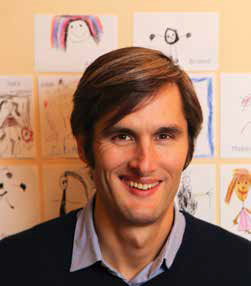
Fifteen years, $326 million, and almost 600,000 projects later, it’s safe to say that Best’s idea is working. DonorsChoose.org counts Oprah, Stephen Colbert, and Jimmy Fallon among its supporters, as well as the Claire Giannini Education Fund, which funded every listed project in California for the 2010 school year in addition to a $100,000 cherry-on-top donation for other teachers in the US.
“We’ve seen a burst in creativity thanks to technology,” said Best. “(Students) are creating underwater robots to uncover solutions for lake pollution. Our teachers use technology to help both their struggling students and their most advanced students. Teachers are better equipped than ever before to offer customized learning experiences for all of their students.”
One of the most powerful aspects of DonorsChoose.org is that requests come straight from the classroom—not from a principal or central office initiative. “It’s always been our philosophy at DonorsChoose.org that teachers know best what their students need to learn, and nothing can replace an amazing teacher,” says Best.
MICHAEL WALDEN
Rethink Education
From Silicon Valley to Silicon Alley, the edtech industry is a hot story right now. Venture and equity financing for companies that identify as edtech rose to nearly $1.87 billion last year—up 55% from the year before according to research firm CB Insights.

To get to the bottom of that story, it’s important to follow the money that comes from firms like Rethink Education and venture partner Michael Walden. Walden and his fellow partners support a large portfolio of companies including Hapara, Engrade, and General Assembly, which was selected as one of Fast Company’s 10 most innovative companies for 2015. Heavyweight advisors for Rethink include Jonathan Harber, CEO of Pearson K-12 Technology, and Michael Horn from the Innosight Institute.
Walden serves on the board of directors of two of Rethink’s portfolio companies—Everfi, which focuses on teaching, assessing, badging, and certifying students in critical skills, and Neverware, which provides a service to make old PCs run like new. Despite the stereotypes, investing in edtech is about more than just the stuff, says Walden. “We don’t talk about technology as the ultimate solve. We are big believers that teachers are still the fundamental key to this. We are constantly asking ourselves how we help them and make them better from anything from better professional development tools to better technology to better data on their students.”
He’s also quick to admit that there are still more questions than answers. “We still haven’t solved universal access through broadband, Internet, computing power—these things are not universally available yet,” says Walden. In other words, no matter how fancy the technology gets, it will mean absolutely nothing to students who cannot access it. Michael Walden is trying to change that—one investment and one great idea at a time.
ANN COTTON
Founder, President Camfed International
You wouldn’t expect a conversation on data privacy to reference the African Bush, but then you’ve probably never met Ann Cotton. On a research trip to Zimbabwe in 1991, Cotton, the founder of an organization called Camfed, learned that poverty was the main reason that children in Africa, and especially girls, were not being educated. There was no such thing as a public school system as we know it and families couldn’t afford books or tuition fees for all of their children.
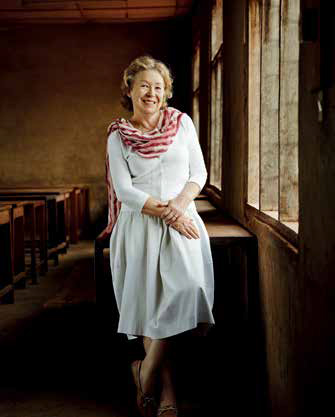
Cotton spearheaded a grassroots campaign to raise funds to send girls to school and Camfed was founded. In 1993 the organization sent 43 girls to school, and in 2013 they supported over 434,000 children. When it comes to mining data on students, whether in Zimbabwe or Wisconsin, Cotton has strong opinions. “People have a fundamental right to own, understand, and control their data and information. When data gathered in poor communities flows only from the poor to the rich, from development agencies to donors, and from the governed to the governing, this undermines efforts to eradicate poverty, including through education,” says Cotton. “The endless anxiety that poverty creates is exacerbated by encounters with authorities that remind poor people of their inadequacy, collect data on their lives, and never share the results.”
Camfed recently launched a partnership with Worldreader to drive up learning outcomes in Tanzania, where the teaching language switches from Swahili to English at the secondary level, adding an additional barrier for girls in impoverished communities. “By providing cost-effective digital e-readers with bespoke learning materials that help girls to learn English, as well as being able to hold thousands of relevant books, we plan to improve education quality and access at scale,” explains Cotton.
KAYA HENDERSON
Chancellor of DC Public Schools (DCPS)
In 2010 Kaya Henderson took over as chancellor of the District of Columbia Public Schools (DCPS) amid staggering dropout rates, failing test scores, and the shouting of angry parents. Teacher retention was low and illiteracy was high. Her predecessor Michelle Rhee was notoriously public and even went so far as to fire a principal on camera—a move that made her less than popular with the Washington Teacher’s Union.
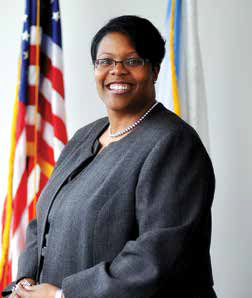
One of Henderson’s first proclamations was that she’d be less talk and more walk. Her strategy of sending school representatives into neighborhoods in an effort to encourage more one-on-one communication is working so far, though some parents were not so thrilled with her proposal to close 20 schools in the district. Her approach to dealing with teachers, however, is carrying favor with the union and she recently wrote an oped piece/love letter in The New York Times on the virtues of respecting the educator. “Real respect—the kind you have for the people you most admire—is the only path to great teaching,” wrote Henderson.
She has put her district’s money where her mouth is, and top teachers are now paid $125,000 a year. But real success may lie in other numbers. Attendance and graduation rates are slowly increasing and truancy rates are steadily falling. Plans are in the works for an all-male high school to accommodate the black and Latino males, many of whom never graduate, who make up 43% of the DCPS.
KEITH KRUEGER
CEO, CoSN
Everyone needs a friend in Washington. For about 10 million students in school districts nationwide looking to enhance their education through technology, Keith Krueger and his team at The Consortium for School Networking (CoSN) are probably their best bet. From showing off the first use of Mosaic for education at their first conference to leading the passage of E-Rate to their long-standing work on helping schools budget with Total Cost of Ownership, CoSN CEO Keith Krueger has seen the changes and evolution of how we think about edtech. “We spent an awful lot of time talking about the big vision, sometimes misplaced talking about the technology and not about the learning,” says Krueger. “We are at a different moment where we can dive in a little bit deeper and see things from a broader consensus that technology will be a catalyst for a different kind of learning. The question is no longer should we invest in technology but how do we do it in a way that makes a really profound difference?”
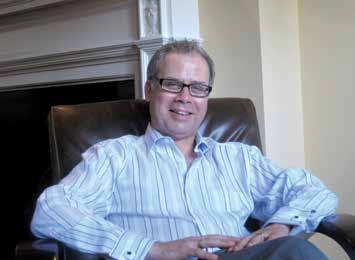
Krueger considers the FCC’s decision to increase the E-Rate by $1.5 billion a year as CoSN’s finest accomplishment to date. He also sees a need to invest in not only the infrastructure side but in the people side as well. “As people who grew up using different technologies, how do we learn to think about the new opportunities that the emerging technologies enable for more personalized learning?” Kreuger says that these can be a catalyst to learning that is “deeper … more collaborative, more creative.”
LEONIE HAIMSON
Class Size Matters
Talk about David and Goliath. Leonie Haimson is the New York mom who can take credit, at least in part, for taking down inBloom, Inc., the nonprofit educational database company that stored data on public school children and was bankrolled by the Bill and Melinda Gates Foundation to the tune of $100 million.
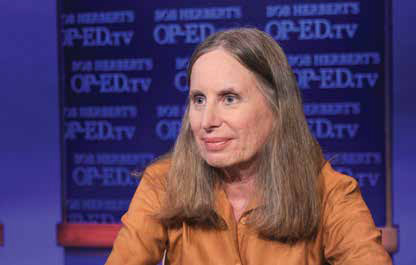
“I was shocked to learn that all of this data was being collected and absolutely no one knew about it,” says Haimson. “Not the parents, not the superintendents, not the school board members. It was unbelievable.”
Haimson, who is also executive director of Class Size Matters, as well as the founder of the NYC Public School Parents blog, was joined by Rachael Stickland from Colorado in her fight against inBloom. The two have taken their crusade all the way to Washington, where Haimson says they are given a forum from both sides of the aisle—though there is still much work to be done. Who’s not listening? According to Haimson, the edtech companies. “There seem to be workshops and panel discussions and forums virtually every day of the week on the subject mostly inviting edtech enthusiasts, not parents,” says Haimson.
ANDREW COY
Digital Harbor Foundation
When Baltimore high-school teacher Andrew Coy realized that his students were not being given the chance to acquire high-tech skills such as Web design, he began teaching the classes after school. These classes eventually begat the Digital Harbor Foundation, which grew so quickly that the organization took over and renovated a neighboring abandoned rec center to accommodate more students. Over 1,500 people recently visited the site, and they all asked Coy the same question: How do we do what you’re doing?
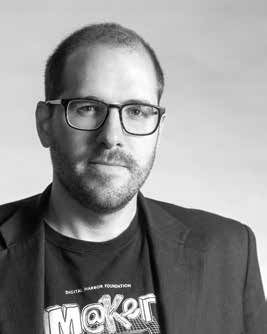
Instead of just showing them how to do it, through the Perpetual Innovation Fund Coy is actually helping them acquire the resources they need—as long as they promise to pay it forward to help another school do the same thing. “If an educator comes to us and says that they want a 3D printer but their principal doesn’t have it in the budget, we tell them to come up with a business plan of how [they] can pay for it and we will give them a free 3D printer and training,” says Coy. “So a teacher that doesn’t otherwise have access gets it and starts a club and creates stuff that they can sell. They then contribute that money to another teacher doing the same thing.”
The Digital Harbor Foundation also holds two-and four-day seminars to help educators and students become Makers. Coy says that the way students learn today is constantly evolving, but that the common sentiment remains the same: Students are sick and tired of solving made-up problems. They want to solve real-world ones.
SHELLY SANCHEZ TERRELL
@ShellTerrell
Shelly Sanchez Terrell’s relationship with social media began in 2009 when she started tweeting. She’d always enjoyed collaborating creatively and “crowdsourcing” her goals and found the feedback of others to be engaging and stimulating. Then along came the blog, which initially had about eight readers (and one of those was her dad). It was when she started blogging her 30 Goals Challenge for Teachers that others stepped up to the challenge.

“I told myself that I was going to accomplish 30 goals in the year and I invited other teachers to join me. Over five years later, over 10,000 teachers have joined,” says Terrell. “I decided to put together the #EdChats and now there are over 450 different Twitter topics where teachers can share information. It really shows the power of when teachers use social media to connect, to share, and to support each other.”
She’s the first to admit that she was not an overnight sensation and that her electronic outreach was met with naysayers. She kept blogging and never let the negativity get her down. “What I found is that change takes time,” she says. “Even it we don’t see a lot in the beginning, five, six years down the road that small piece of action can transform lives.”
Terrell has since traveled to over 20 different countries to help teachers use technology and social media in the remotest of locales. She’s found that the interaction helps not only the students but also the teachers. “Sometimes teachers act like elephants that have chains on them because even when the chains are off they still think they’re there,” she says.
RICHARD BARTH
Regardless of one’s opinion on the charter school movement in general, it cannot be denied that the KIPP Foundation (Knowledge Is Power Program), the nation’s largest nonprofit charter network, has had an impact on new methodologies and technologies in all K-12 classrooms.
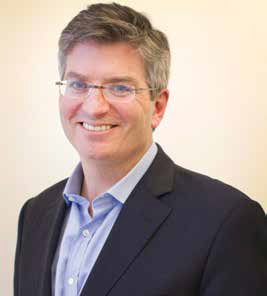
The 20-year-old KIPP system started with two schools in Houston, NY and now boasts 160 schools serving over 60,000 underprivileged students in 20 states. CEO Richard Barth has been in charge since 2005 and has raised more than 300 million dollars in grants and philanthropic investments in the foundation. Under Barth’s watch, KIPP has become a leading advocate of “blended learning” techniques, where students learning through in-person instruction as well as through computer-aided techniques can track access using data. What was once considered a radical idea is now becoming a mainstream, if still provocative, discussion. Rather than just “blow up the classroom,” KIPP schools “use blended learning to do what they do better, which is smart. They’re doing it exactly right,” says Michael Horn, executive director of the education program at the Clayton Christensen Institute, in a recent U.S. News & World Report profile on KIPP schools.
More recently, Barth joined the board of directors of Tales2Go, the children’s audiobook streaming service. Tales2Go supports the development of literacy skills in young students during early childhood and elementary school.
